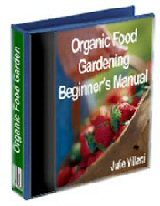Container Herb Garden
Container herb gardens may be relatively new, but herb gardens date back to medieval times. Monasteries and nunneries grew them to provide the necessary medicinal benefits as well as to enhance the taste of their food, and later, for decorative purposes.
Culinary herbs not only enhance the taste of food, but also provide necessary nutrients that aren’t found in vegetables. Some of them are trace minerals and micro-nutrients that your body only needs a small amount of to function at its peak.
The need for medicinal herbs is just as great today as it was in medieval times. Studies have shown that many herbs not only greatly improve the physical health, but also have an effect on mental well being. You can have all these benefits right at your fingertips in your own container garden.
What I find awesome about herbs is that the culinary herbs are also medicinal, so while you’re enhancing the taste of your meal you’re balancing your system, and many times you can stop an acute illness with a simple meal. Or you can use culinary herbs in teas for medicinal benefits.
Container herb gardening is a way for even city dwellers in cramped apartments to have fresh herbs either for culinary or medicinal purposes.
Making your container herb garden isn’t hard at all, but you do have to pay attention to a few small details.
Culinary herbs not only enhance the taste of food, but also provide necessary nutrients that aren’t found in vegetables. Some of them are trace minerals and micro-nutrients that your body only needs a small amount of to function at its peak.
The need for medicinal herbs is just as great today as it was in medieval times. Studies have shown that many herbs not only greatly improve the physical health, but also have an effect on mental well being. You can have all these benefits right at your fingertips in your own container garden.
What I find awesome about herbs is that the culinary herbs are also medicinal, so while you’re enhancing the taste of your meal you’re balancing your system, and many times you can stop an acute illness with a simple meal. Or you can use culinary herbs in teas for medicinal benefits.
Container herb gardening is a way for even city dwellers in cramped apartments to have fresh herbs either for culinary or medicinal purposes.
Making your container herb garden isn’t hard at all, but you do have to pay attention to a few small details.
- Herbs don’t like rich soil. They do best in a mixture of loam and sand with no fertilizer. Be sure to cover the bottom of the pot with small gravel or pot shards to provide adequate drainage.
- If you plant several different varieties of herbs in a large container be sure they have similar growing need. For instance, don’t plant mint, which likes partial sun and moist soil, with rosemary which likes full sun and needs to dry out a bit between waterings.
- When you take your bedding plants out of their 2" starter pots, the roots will be tangled and balled up. Gently spread the roots out before placing them in the larger pot. If you leave them in a ball, they won’t spread out and take in the nutrients from the new soil.
- You can make your container herb garden all in a single 12" to 16" pot, or you can group several small pots together on a patio, balcony or in a sunny window.
- Be sure to leave at least 1" between the roots and the edge of the pot. The soil will offer some insulation against summer heat.
- Containers dry out faster than garden soil, so check often, but don’t over water.
Learn the secrets to growing a successful organic vegetable garden...
Here's The Ultimate, 'Take-You-By-The-Hand' manual For creating your own organic garden. You may not realize it, but in the next few minutes you're going to learn that organic gardening can greatly improve your health and energy levels while really lowering your weekly food bills and it only takes about half an hour per week.
If you're like me you probably hate the idea of eating foods (and providing them for your family) that may have been grown with chemicals.
Not only that, but the foods you buy from the supermarket may have been hanging around for days or even weeks before you buy them. This means that the life energy of the plant you're going to eat is gone. When you eat something that is still living you absorb its life energy, which has additional health benefits.
Stop! Do you really want to keep paying out hundreds of dollars a month for fruit, vegetables and herbs that have little or no nutritional value? Or would you rather get started growing your own healthy, fresh organic food?
...create a healthier and more productive organic food garden , whether you are new to gardening or a 'seasoned' gardener.
Start your organic garden now. Get your Organic Food Gardening Beginner's Manual today.
Not only that, but the foods you buy from the supermarket may have been hanging around for days or even weeks before you buy them. This means that the life energy of the plant you're going to eat is gone. When you eat something that is still living you absorb its life energy, which has additional health benefits.
Stop! Do you really want to keep paying out hundreds of dollars a month for fruit, vegetables and herbs that have little or no nutritional value? Or would you rather get started growing your own healthy, fresh organic food?
...create a healthier and more productive organic food garden , whether you are new to gardening or a 'seasoned' gardener.
Start your organic garden now. Get your Organic Food Gardening Beginner's Manual today.


